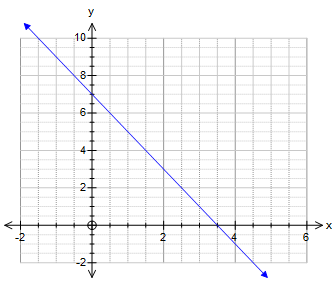How do you find the slope and y intercept for #y = -2x + 7#?
1 Answer
Explanation:

The slope is the amount of up or down for the amount of along and is directly related to the change in
So if you had say, 6 down (change in y value) for 3 along (change in x value) the slope is
'~~~~~~~~~~~~~~~~~~~~~~~~~~~~~~~~~~~~~~~~
But if we treat this as a ratio and divide both numerator and denominator by 3 we have:
So for every 1 along we have 2 up or down.
~~~~~~~~~~~~~~~~~~~~~~~~~~~~~~~~~~~~~~~~~~~~
We need to have a way of showing if the slop is upwards or downwards. The convention for this is that if we have -2 then the slope is downwards if we move from left to right. In which case +2 means upwards.
~~~~~~~~~~~~~~~~~~~~~~~~~~~~~~~~~~~~~~~~~
'~~~~~~~~~~~~~~~~~~~~~~~~~~~~~~~~~~~~~~~~~~~
This is when the line crosses the x-axis. The x-axis it at
So to find this we substitute
Add
Divide both sides by 2 giving:
'~~~~~~~~~~~~~~~~~~~~~~~~~~~~~~~~~~~~~~~~~
This when the line crosses the y-axis. The y-axis is at
~~~~~~~~~~~~~~~~~~~~~~~~~~~~~~~~~~~~~~

